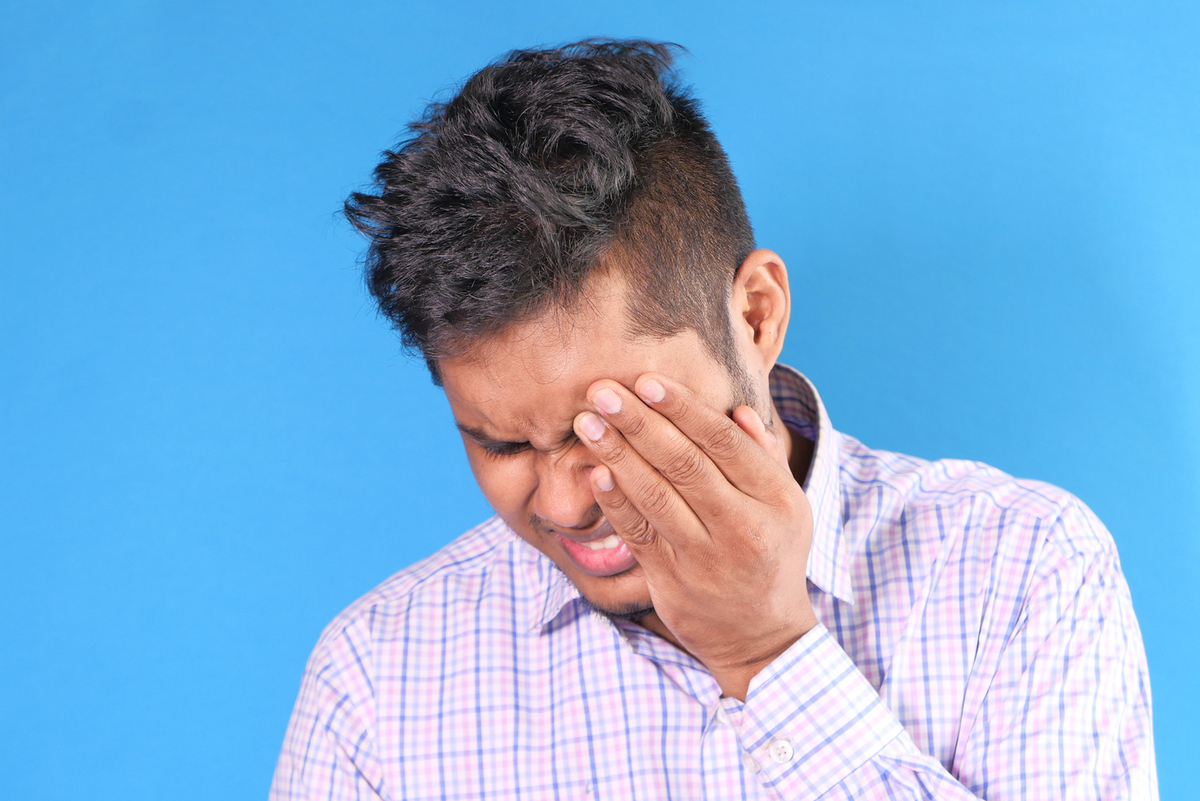Eye injury accounts for about ten percent of all trauma in humans. Since the eye has an area roughly 375 times smaller than the area of the entire human body, this disproportion allows us to grasp just how common eye injuries are. Therefore, they deserve special attention, demanding quick and adequate treatment.

These statistics, of course, involve all types of eye injury, whether we are talking about those which will easily heal with no consequences whatsoever, or severe injuries which may result not only in vision loss, but can even lead to eyeball loss.
What are the types of eye injury?
There are four main mechanisms which cause eye injury, and according to the cause, they can be categorized as mechanical, chemical, burns, or injuries resulting from radiation. Let's have a comprehensive look at all the ways in which you can hurt your eyes.
Mechanical causes of eye injuries can fall into four sub-groups:
- Foreign bodies – Usually pieces of metal or wood during processing, or after explosions. Patients describe sensations of itching, and they usually manifest with involuntary winking, sensitivity to light, and redness in the eye.
- Erosion – Fairly common in gardening or when practicing DIY, caused by nails, pieces of cardboard or paper, branches, leaves, or thorns. After the eye is scratched, the injury can serve as an entrance to microorganisms, causing infection. It’s treated with antibiotics.
- Penetration – If the outer layer’s integrity is disrupted due to sharp objects entering the eyeball. Complications are related to the place and the size of the injury, and may require surgery. If there is an exit wound in addition to the initial one, it is called a perforation.
- Contusion – If the outer layer of the eye is not affected. Depending on the structure of the eye affected by the injury, it may manifest differently, but the most serious complication involves the rupture of the eyeball. These injuries are most commonly caused by hits from a fist, or even a ball when engaged in sport activities. Also, it’s not unusual to hurt oneself during woodchopping.
Blow-out fractures – caused by blunt force — are also worth mentioning. Here, the eyeball is pushed back, which increases the pressure in the socket, further leading to fracture of the bony cavity which houses the eye. This can be further complicated by an infection. The patient usually complains about double vision and the lack of sensation around the eye. Other parts of the eyeball can also be affected, but also the nerve and the eyelid.
Other types of eye injury are more easily described succinctly:
- Chemical eye injuries are usually caused by various acids or bases, with bases causing more damage. Symptoms depend on how deep the injury is, as well as how long has the eye been exposed to the offending chemical. The eye must be washed immediately with water or saline, and never covered.
- Burns – whether we talk about hot oil, steam, or molten metal, the consequences also depend on the area affected and duration of exposure.
- Eye injuries can also be caused by radiation – other than ionizing radiation, these injuries may be caused by UV (during welding, or even during sunlight reflections from ice, snow, or sea surface), infrared, or even visible light (while staring at the sun, or into a laser). Since these injuries usually leave severe consequences, and the treatment may have little effect, prevention such as protective eyewear is of utmost importance.
Eye injuries: Better safe than sorry
As you see, eye injuries can be extremely complicated to treat. This is important to be aware of, because it is thought that about one half of eye injuries could have been prevented. That means that 50 percent of all eye injuries would have never happened if adequate safety measures and caution were applied, such as safety measures like wearing goggles during work processes that may hurt your eyes. Also, it is thought that wearing seatbelts will (amongst other) reduce chances of eye injury.
One of the most important things when talking about eye injury prevention includes child safety, which would involve lowering the risk of young kids handling sharp objects, as well as firecrackers and similar items.
However, as it turns out, it is thought that safety goggles or protective eyewear may prevent an astounding 90 percent of eye injuries. If regular contact lenses help in reducing exposure to a myriad of external irritants, imagine what specialized equipment can do? If you’re still not convinced, one study even gave evidence that people wearing glasses for more than eight hours a day are at significantly lower risk of contracting COVID-19!
Eye injuries are more common in men, especially younger ones, whereas they are the most common cause of blindness in young children. The vast majority of these injuries happen right in the comfort of your own home. The reason behind it is that, in factory surroundings, workers involved in production are required to wear safety equipment exactly so they could have less chance of injury happening (not to mention that safety equipment is incomparably cheaper than hospital bills).
At home, you alone are responsible for the safety of your eyes. Take it seriously!
- www.ncbi.nlm.nih.gov/pmc/articles/PMC3013431/
- https://www.ncbi.nlm.nih.gov/pmc/articles/PMC4790161/
- https://www.magonlinelibrary.com/doi/full/10.12968/hmed.2013.74.Sup7.C108


Your thoughts on this